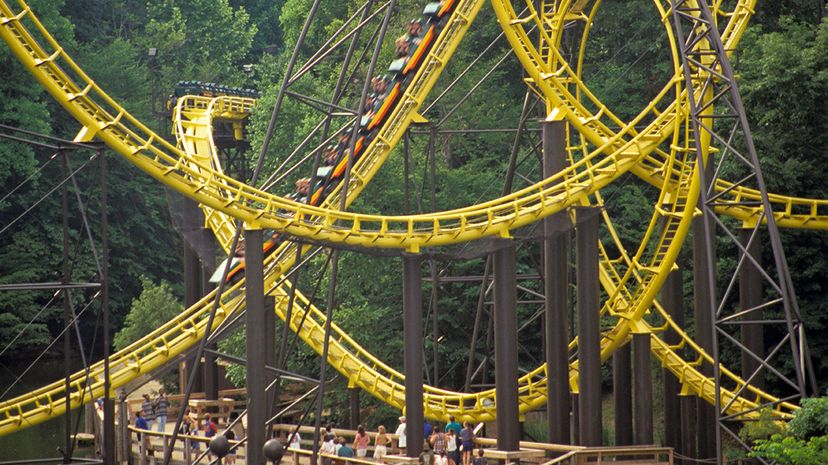Roller Coaster Physics

The purpose of the coaster's initial ascent is to build up a sort of reservoir of potential energy. The concept of potential energy, often referred to as energy of position, is very simple: As the coaster gets higher in the air, gravity can pull it down a greater distance. You experience this phenomenon all the time. Think about driving your car, riding your bike or pulling your sled to the top of a big hill. The potential energy you build going up the hill can be released as kinetic energy — the energy of motion that takes you down the hill.
Once you start cruising down that first hill, gravity takes over and all the built-up potential energy changes to kinetic energy. Gravity applies a constant downward force on the cars. The coaster tracks serve to channel this force — they control the way the coaster cars fall. If the tracks slope down, gravity pulls the front of the car toward the ground, so it accelerates. If the tracks tilt up, gravity applies a downward force on the back of the coaster, so it decelerates.
Advertisement
Since an object in motion tends to stay in motion (Newton's first law of motion), the coaster car will maintain a forward velocity even when it is moving up the track, opposite the force of gravity. When the coaster ascends one of the smaller hills that follows the initial lift hill, its kinetic energy changes back to potential energy. In this way, the course of the track is constantly converting energy from kinetic to potential and back again.
This fluctuation in acceleration is what makes roller coasters so much fun. In most roller coasters, the hills decrease in height as the train moves along the track. This is necessary because the total energy reservoir built up in the lift hill is gradually lost to friction between the train and the track, as well as between the train and the air. When the train coasts to the end of the track, the energy reservoir is almost completely empty. At this point, the train either comes to a stop or is sent up the lift hill for another ride.
At its most basic level, this is all a roller coaster is — a machine that uses gravity and inertia to send a train along a winding track. Next, we'll look at the various sensations you feel during a roller coaster ride, what causes them and why they're so enjoyable.